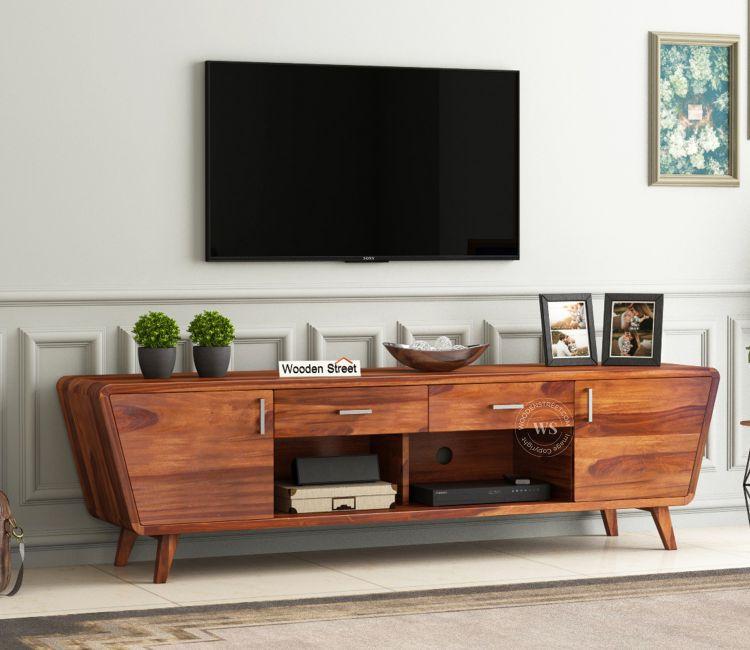A TV unit is more than just a piece of furniture to hold your television—it’s a focal point of your living room that contributes to both the visual appeal and functionality of the space. Choosing the perfect TV unit requires more than matching colors or finishes. It involves understanding your living room layout, space constraints, storage needs, and overall aesthetic. In this article, we’ll guide you on how to choose a TV unit that complements your space while offering practicality and style.
Understand Your Living Room Dimensions
Before buying any furniture, especially a tv unit, it's essential to measure your living room. Consider the length and width of the space, and more importantly, the wall where you plan to place the TV. The size of your TV also plays a key role—your unit should ideally be wider than your television to ensure stability and balance. An oversized unit can make a small room feel cramped, while a tiny one might look out of place in a large open layout. Proper measurements help you avoid costly mistakes and ensure that the unit fits well with other elements like sofas, chairs, or coffee tables.
Choose a Layout-Compatible Design
Every living room has a unique layout, and your TV unit should fit naturally into it. For a rectangular room, a long, low unit might work best, especially if your seating is directly in front of the television. For L-shaped or open-plan layouts, corner TV units or wall-mounted designs can make the most of unused space and keep the flow of the room uninterrupted. If your living room doubles as a dining or workspace, consider units with closed cabinets to hide away cables, remotes, or accessories. This keeps the room tidy and allows the TV area to blend effortlessly with other zones.
Match the Style with Your Décor
The style of your TV unit should complement the rest of your furniture and interior design. Whether your home has a modern, traditional, rustic, or minimalist look, the unit should reflect that same vibe. Sleek finishes and metal accents suit contemporary settings, while wooden textures and ornate details work well in more classic or earthy environments. Color coordination is equally important. Neutral tones like beige, white, or walnut are versatile, but bold colors or two-tone finishes can make a statement when used thoughtfully. The aim is to create harmony so that your TV unit doesn’t stand out awkwardly but feels like a part of the overall design story.
Consider Storage and Functionality
A good TV unit does more than hold a television. It offers storage for your entertainment accessories like set-top boxes, gaming consoles, speakers, and even books or décor. When evaluating options, think about your daily usage. If you have kids, units with drawers or cabinets can help store their games and toys safely. If you prefer a clean, minimalist space, go for designs with hidden storage and cable management systems. Some units even come with open shelves for display, offering space to showcase photo frames, plants, or art pieces. Make sure the design supports your needs without cluttering the space.
Think About TV Viewing Height
An often overlooked but critical aspect is the viewing height of your television. Ideally, the center of your TV screen should be at eye level when seated. This reduces neck strain and enhances viewing comfort. Therefore, the height of your TV unit should be chosen carefully based on your sofa or chair height. Wall-mounted TV units offer flexibility in this aspect as they allow you to fix the screen at a desired height while using the unit below purely for storage. For floor-standing units, ensure the height complements your seating arrangement and offers an unobstructed view from different angles.
Choose Quality Materials for Durability
A TV unit is a long-term investment, and selecting quality materials ensures durability and longevity. Solid wood, engineered wood, metal, and glass are common materials, each offering different aesthetics and maintenance needs. Solid wood is sturdy and timeless but can be expensive. Engineered wood is budget-friendly and comes in various finishes but may not last as long. Glass adds a modern edge but requires careful handling and frequent cleaning. Your choice should depend on your lifestyle, especially if you have kids or pets, and your willingness to maintain the piece over time.
Balance Budget with Design
While it’s tempting to go for the cheapest or the trendiest option, finding a balance between your budget and the design is key. A TV unit should offer value by being both functional and visually pleasing. Set a realistic budget after researching materials and features you want. Sometimes, spending a little more on a unit with extra storage or a premium finish can save you money in the long run by avoiding frequent replacements. Be mindful of your spending but don’t compromise on essentials like durability, size compatibility, and storage solutions.
Choosing the perfect TV unit for your living room layout is a mix of planning, style sense, and practical decisions. From measuring the space accurately to aligning the design with your home décor and understanding your viewing comfort, every detail contributes to the final decision. A well-chosen TV unit not only anchors your entertainment zone but also enhances the overall ambiance of your living space. Take the time to evaluate your options, and you’ll find a piece that’s both beautiful and built to serve your needs for years to come.

